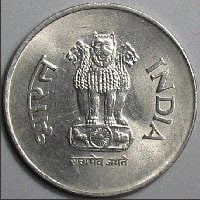In April, India had around 403 million mobile users. About 46% of them, or 187 million, did not have bank accounts. My colleague Ravi doesn’t find this surprising. “People can do without bank accounts but not mobile phones. My mom and aunt don’t have bank accounts but they use mobile phones to stay connected with others,” Ravi says. My driver Raju too doesn’t have a bank account but he carries a cellphone. He has not been able to get an account as he doesn’t have a proof of address and can’t fulfill the KYC (know your customer) norms, essential for opening a bank account. A bank account is not everything about financial inclusion but it is still an important indicator. How many Indians have bank accounts? Anil Ambani, the billionaire chairman of Reliance-Anil Dhirubhai Ambani Group, said in the recent annual general meeting of one of his group firms that nearly 400 million Indians have bank accounts. That’s less than 40% of the country’s population. Reserve Bank of India deputy governor K.C. Chakrabarty, in a recent presentation on financial inclusion in Mumbai, said about 40% of Indians have check-in accounts. Going by his presentation, 51 out of every 100 Indians had bank accounts in 1993. This has marginally gone up to 54 in 2007. Yet another presentation by another central banker, a few years back, had said 59% of the adult population in India has bank accounts and that there is a large gap between the coverage of banking services in urban and rural pockets. In rural India, the coverage among the adult population is 39% against 60% in urban India. This, of course, doesn’t necessarily mean that 60 out of every 100 Indian adults in cities have bank accounts as many people operate multiple accounts. The sources of this information are different and I cannot vouch for their accuracy but the fact remains that the coverage of banking services in the world’s second-fastest-growing major economy is very low, compared with a developed country. A British Bankers’ Association survey says 92-94% of the population in the UK has either current or savings accounts. The low coverage is true for other financial services as well. Ambani’s presentation says barely 45 million Indians invest in mutual funds. This is about 4% of India’s population. The comparable figure for the US is 31%. When it comes to direct investment in equities, the number drops drastically and only 15 million Indians hold Demat (electronic share) accounts that one needs to buy stocks. Nearly 80% of the Indian population is without life, health and non-life insurance coverage. While life insurance penetration is 4%, the non-life cover is even lower at 0.6%. The per capita spend on life and non-life insurance is just about Rs2,000 and Rs300, respectively, compared with a global average of at least Rs18,000 and Rs13,000. Some other relevant data will help us understand the criticality of the issue. Only 5.2% of India’s 650,000 villages have bank branches even though 39.7% of the overall branch network of Indian banks, or 31,727, are in rural India. Overall, the population covered by each branch has come down from 63,000 in 1969 to 16,000 in 2007 and the total number of check-in accounts held at commercial banks, regional rural banks, primary agricultural credit societies, urban cooperative banks and post offices during this period has risen from 454.6 million to 610.3 million. Still, very few people in the low-income bracket have access to formal banking channels. Only 34% of people with annual earnings of less than Rs50,000 in urban India had a bank account in 2007. The comparative figure in rural India is even lower, 26.8%. The situation has definitely changed for the better with banks aggressively opening “no-frill accounts”, that require very low or zero minimum balance but a recent study by Skoch Development Foundation, a strategy and management consultancy, says only 11% of 25.1 million such basic banking accounts, opened between April 2007 and May 2009, are operational. This means the business correspondent or BC model that the Indian central bank is using to spread banking services across the country has failed. This model allows non-governmental organizations, self-help groups, microfinance organizations, farmers’ clubs, post offices, cooperatives, panchayats and many others, including IT-enabled rural outlets of corporate entities and insurance agents to act as intermediaries on commission. The Skoch study, based on 28 financial inclusion projects and a large banking correspondent project in Andhra Pradesh, finds that the BC model is not commercially viable. The gap between what the banks are paying BCs or vendors and what actually such entities spend in two years works out to Rs26.25 per account.
The regulator and the banks need to address this immediately. The mere opening of accounts and branch expansion will not solve the problem. The biggest challenge before Indian banks is lowering transaction costs for small loans and deposits, using technology. South Africa has a largely rural population with no access to the traditional banking channel but high mobile penetration. Its banks have developed many innovative products, using mobile telephony and the postal network, to spread financial inclusion. Indeed, there are many regulatory issues that need to be addressed in the Indian context but for the time being commercial banks and mobile service providers seem to be busy using each other’s database to sell products and not spread banking. My driver Raju is often penalized by the traffic police for using his cellphone while driving. He can’t resist taking calls from the “ladies” who call him “Sir” and offer him credit cards and consumer loans. But that’s a different story of inclusion. Tamal Bandyopadhyay keeps a close eye on all things banking from his perch as Mint’s deputy managing editor in Mumbai. Livemint.com

